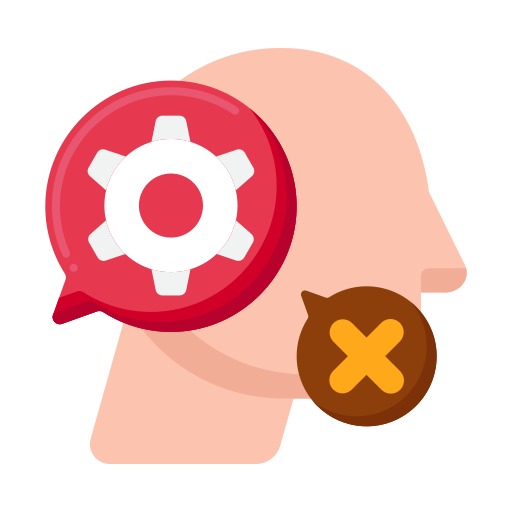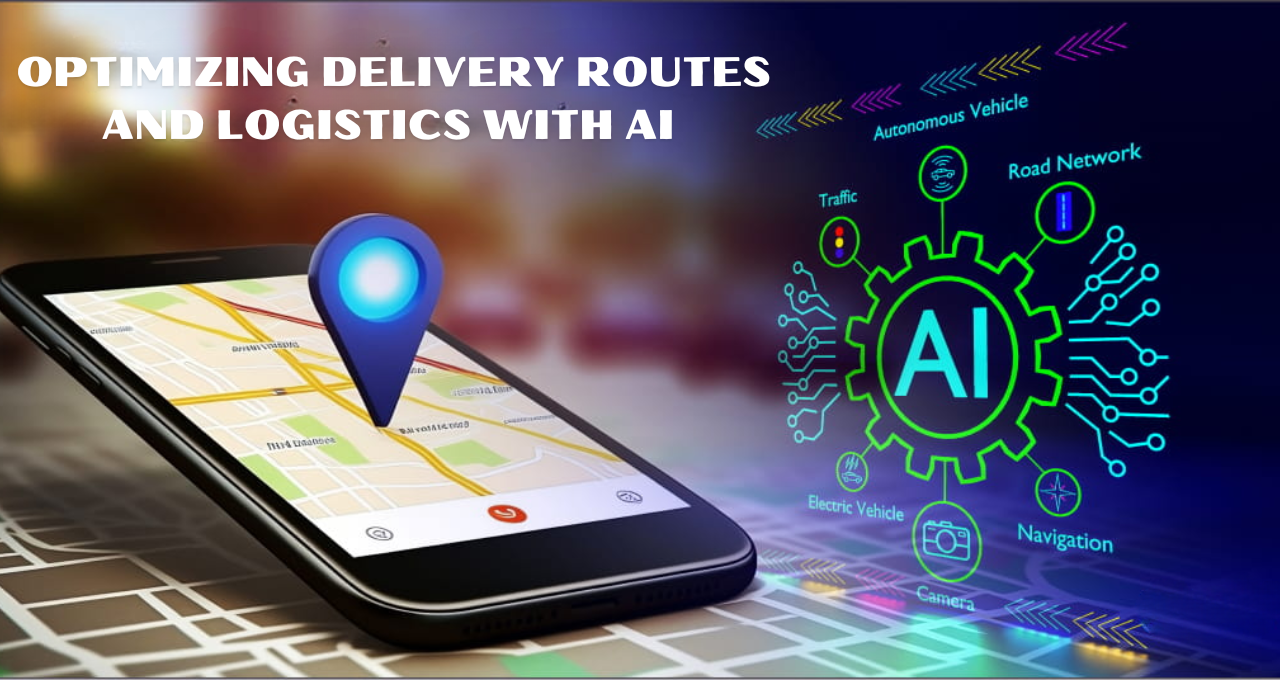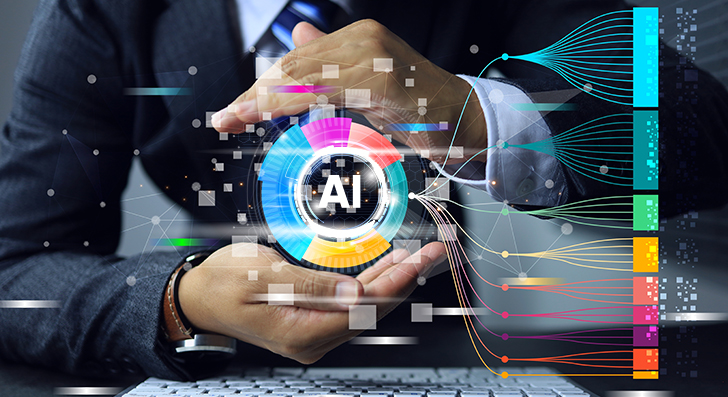Optimizing Delivery Routes and Logistics with AI, Artificial intelligence is revolutionizing delivery routes and logistics, transforming an age-old industry. By crunching vast amounts of data on traffic, weather, distance, and delivery windows, AI algorithms can craft the most efficient routes possible. This translates to faster deliveries, reduced costs (fuel, time, labor), and a happier customer experience. Imagine a world where your online order arrives ahead of schedule, and businesses save money on every trip. That's the power of AI in logistics.
A recent analysis by Report Linker anticipated that by 2030, the global market for route optimization software will be worth $21.7 billion, with AI-powered solutions leading the way. This demonstrates both the rising need for effective delivery operations and the potential contribution of AI technology to this goal.
So today, in this article, we’ll take a deep dive into the field of AI route optimization and examine its fundamentals, benefits, and key features.
The Basics of AI Route Optimization
Imagine a world where delivery drivers never get stuck in traffic, businesses save money on fuel, and customers receive their packages faster. This is the promise of AI route optimization.
What is AI route optimization?
In essence, AI route optimization is the process of planning the most efficient routes for delivery vehicles using machine learning and artificial intelligence algorithms.
Artificial intelligence (AI) route optimization software can generate optimal routes that help drivers save time, fuel, and resources by assessing multiple factors, including distance, traffic conditions, and delivery windows.
How AI route optimization works
In order for AI route optimization software to work properly, it must integrate with other systems that offer information on orders, customers, and delivery locations. Once the AI software has access to this data, it employs machine learning algorithms to generate the ideal routes. This increases customer satisfaction while minimizing drive time and fuel costs.
The software performs route planning by taking into consideration a number of variables, including vehicle capacity, weather conditions, and traffic jams. As new information becomes available, such as changes in traffic conditions or requests from customers, the route planning can be modified in real-time.
How is AI used in route optimization today
Today's AI route optimization goes beyond static route planning. Here's a breakdown of how AI is actively used:
In essence, AI in route optimization today is an ever-evolving system that leverages real-time data, machine learning, and powerful algorithms to create dynamic, efficient routes, ensuring smoother deliveries and happier customers.
Real-Time Decision Making: No more relying solely on pre-planned routes. AI constantly analyzes live traffic data, weather updates, and even accident reports to identify and adjust routes on the fly. This ensures drivers avoid congestion and unexpected delays, keeping deliveries on schedule.
Machine Learning Magic: AI learns and improves over time. By analyzing historical data on traffic patterns, delivery times, and even driver behavior, AI constantly refines its algorithms. This allows it to predict future traffic conditions and suggest optimal routes based on real-world scenarios.
Multi-Stop Mastery: AI isn't fazed by complex deliveries with multiple stops. It can factor in factors like stop order, vehicle capacity, and even specific delivery windows to craft the most efficient multi-stop route. This ensures drivers maximize deliveries while adhering to time constraints.
Dynamic Fleet Management: AI can handle even the most complex fleet operations. It considers factors like driver availability, vehicle type (e.g., truck size for large deliveries), and even special skills (refrigerated transport) to assign the right driver and vehicle to the right job, optimizing resource allocation.
The different types of AI used for route optimization
There are several key players in the world of AI-powered route optimization, each with their own strengths:
-
Machine Learning (ML): This is the workhorse of AI route optimization. ML algorithms analyze vast amounts of historical data on traffic patterns, delivery times, and even previous driver routes. By learning from this data, ML can predict future traffic conditions and suggest the most efficient routes based on real-world scenarios.
-
Genetic Algorithms: Inspired by natural selection, these algorithms create a "population" of potential routes. Through a process of mutation and selection, the algorithm "evolves" the routes, favoring those with shorter distances, less traffic, and faster delivery times. This iterative process helps identify the optimal route for complex scenarios.
-
Constraint Satisfaction Problems (CSP): This technique tackles situations with specific limitations. In route optimization, these constraints might include delivery time windows, vehicle capacities, or even driver breaks. CSP algorithms find solutions that satisfy all these constraints while still optimizing for efficiency.
-
Ant Colony Optimization (ACO): Inspired by the behavior of ants, ACO simulates how they find the shortest path to food sources. In route optimization, "virtual ants" explore potential routes, leaving a "pheromone trail" indicating efficiency. The system prioritizes routes with stronger trails, ultimately converging on the most efficient path.
AI Improves Route Optimization and Streamlines Delivery Operations
Delivery operations have long grappled with inefficiency – tangled routes, wasted time, and frustrated customers. However, Artificial Intelligence (AI) is transforming this landscape, offering a powerful solution: optimized routes and streamlined delivery processes. Here's how AI is revolutionizing the game:
-
Real-Time Efficiency: No more static routes planned days in advance. AI constantly analyzes live traffic data, weather updates, and even accident reports. This allows for dynamic rerouting, ensuring drivers avoid congestion and unexpected delays, keeping deliveries on schedule and customers happy.
-
Predictive Power: AI is more than just reactive. Machine learning algorithms analyze historical data on traffic patterns, delivery times, and even driver behavior. This allows AI to predict future traffic conditions and suggest optimal routes based on real-world scenarios, creating a proactive approach to efficiency.
-
Multi-Stop Mastery: Complex deliveries with numerous stops are no longer a hurdle. AI factors in stop order, vehicle capacity, and even specific delivery windows to craft the most efficient multi-stop route. This ensures drivers maximize deliveries while adhering to time constraints.
The Key Features of AI Route Optimization Software
AI route optimization software is a potent tool that can help businesses streamline their last-mile delivery processes and increase productivity. This software’s effectiveness is due to a number of key features, including
Mapping and geocoding
AI route planning and optimization software can assist businesses in generating more effective delivery routes by utilizing geocoding and mapping technology. The software’s ability to precisely map out delivery areas and identify customers’ specific addresses can help shorten delivery times and increase customer satisfaction.
Real-time data integration
A key element of AI route planning software is its ability to integrate real-time data from multiple sources. The software can modify delivery routes in real-time as necessary by quickly assessing information like traffic data, weather, and delivery locations. This aids businesses in maintaining efficiency and fulfilling customer demands.
Predictive analytics
Machine learning algorithms and predictive analytics are capabilities that allow the route optimization solution to infer future delivery patterns from historical delivery data.
The software can recognize trends and patterns that could be utilized to increase efficiency and optimize delivery routes through the use of predictive analytics and machine learning models.
For instance, based on the time of day or day of the week, the software can determine the most effective routes. It can also forecast which vehicles are likely to require repairs soon and schedule their service accordingly.
Customization options
AI route planning solutions are made to be customizable and scalable to match the demands of every business. As a result, the software can be adjusted to suit the demands of any business, whether it operates a small fleet of delivery vehicles or a large one with intricate logistics operations.
This enables businesses to streamline their delivery processes without having to change their current processes or systems. Depending on the specific needs of the business, the software can be integrated as required.
Real-World Impact: A Look into UPS
To understand the tangible impact of AI-powered logistics, one need not look further than UPS. By integrating AI into its operations, UPS has slashed its delivery routes by a staggering 100 million miles annually. This has translated to saving an impressive 10 million gallons of fuel annually. Moreover, with dynamic delivery routing that adjusts in real-time to variables such as traffic and weather, UPS has reported annual savings of $200 million. Truly, this is a testament to the prowess of AI in optimizing logistics.
Conclusion
The future of logistics is intelligent. By harnessing the power of AI, companies can optimize delivery routes and streamline operations like never before. This translates to a multitude of benefits: reduced costs, happier customers, a smaller environmental footprint, and improved overall efficiency. As AI continues to evolve and integrate seamlessly into logistics, we can expect even more innovative solutions that will revolutionize the way goods are delivered, creating a win-win situation for businesses and customers alike.
Read more :
AI POWERED FRAUD DETECTION AND LOSS PREVENTION
Demand Forecasting with AI: Avoiding Stockouts and Overstocking
Predictive Maintenance for Retail Equipment: Using AI to Prevent Downtime
For more information contact : support@mindnotix.com
Mindnotix Software Development Company


 AI-Taxi App
AI-Taxi App AI-Food App
AI-Food App AI-Property Mgmt App
AI-Property Mgmt App AI-CRM
AI-CRM AI-Fantasy App
AI-Fantasy App
 Web Development
Web Development App Development
App Development Business & Startup
Business & Startup Hire Developer
Hire Developer
 Digital Marketing
Digital Marketing Lead-generation
Lead-generation Creative Agency
Creative Agency Branding Agency
Branding Agency Augmented Reality
Augmented Reality Virtual Reality
Virtual Reality Internet of Things
Internet of Things Artificial Intelligence
Artificial Intelligence Blockchain
Blockchain Chatbot
Chatbot



